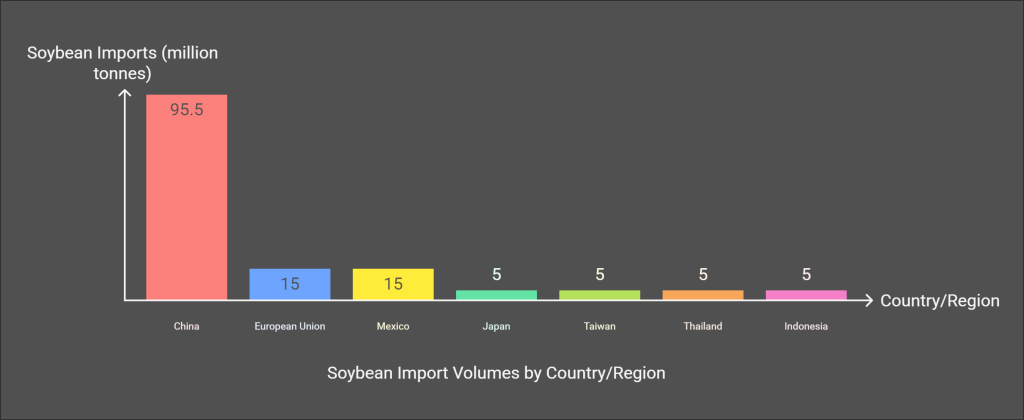Soybeans: A Global Import Market Analysis
By John P. LaWare
Introduction
As a seasoned market analyst who has followed agricultural commodity markets for decades, soybeans have long been on my radar as one of the world’s most widely traded and economically important crops. Soybeans are a critical source of protein for both human food and animal feed, as well as the raw material for soybean oil and other products. The global trade in soybeans is massive, with millions of tonnes shipped across oceans each year to satisfy the protein and vegetable oil needs of populations worldwide.
Soybean Key Importers
China is by far the world’s largest soybean importer, accounting for over 60% of total global soybean trade.[1] China’s soybean imports have skyrocketed from around 15 million tonnes at the turn of the millennium to a record 95.5 million tonnes in 2020.[2] The driver behind China’s enormous appetite for soybeans is the need to feed its growing population and livestock herds. Soybeans are crushed to produce meal, the key protein ingredient in animal feed.

The European Union is the second largest importer at over 15 million tonnes annually.[3] Significant quantities also flow to Mexico, Japan, Taiwan, Thailand, Indonesia and other countries across Asia and the Americas.
Argentina, itself a major soybean producer, is an interesting case. It imports whole soybeans from neighboring Paraguay and then processes and re-exports the soymeal and oil.[4] This crushes added about $650 million in value to Argentina’s soybean industry in 2020 according to the USDA.[5]
